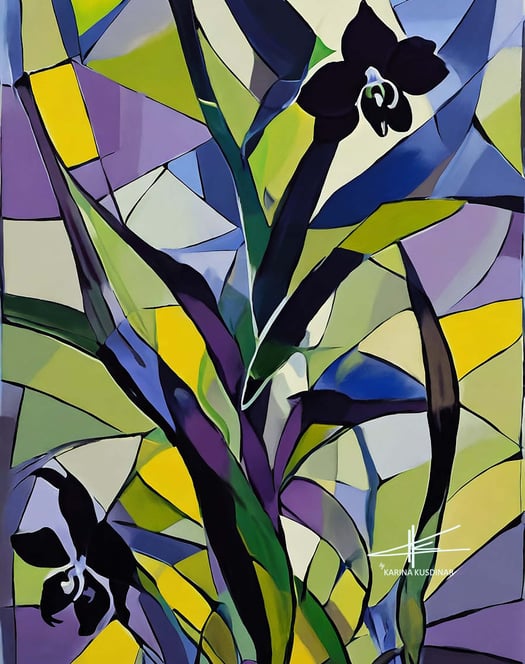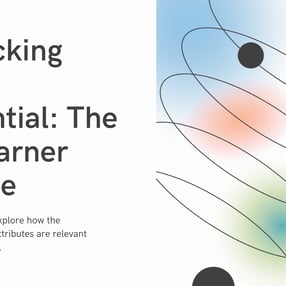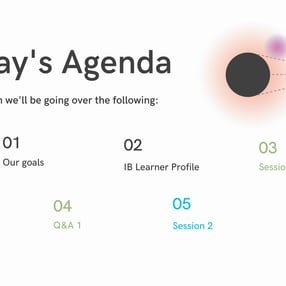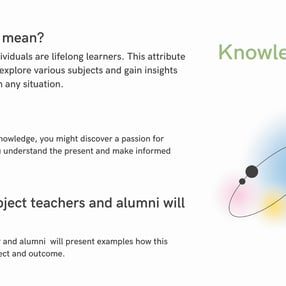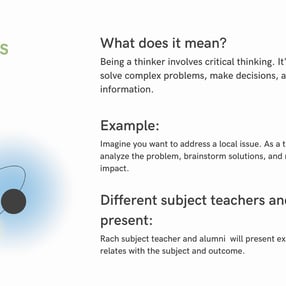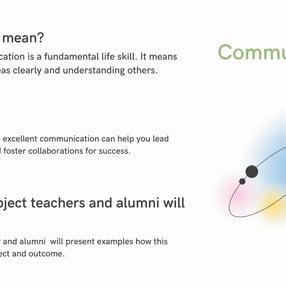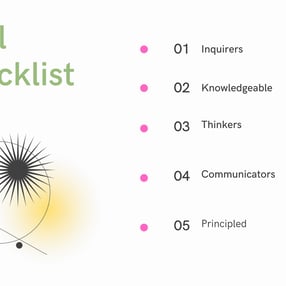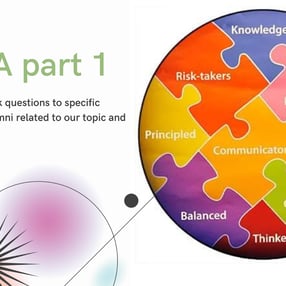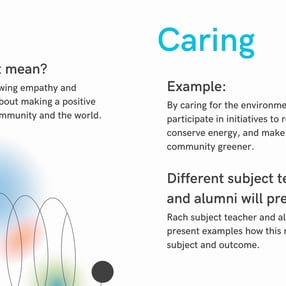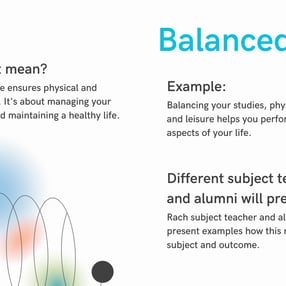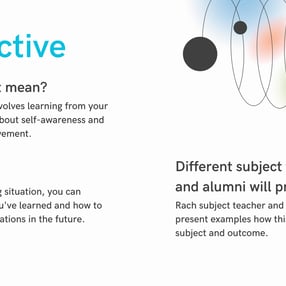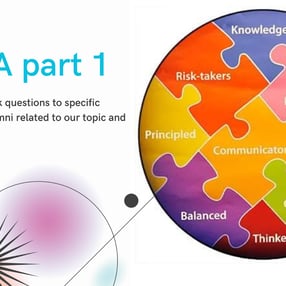Karina at Making PYP Happens Module 1
Making PYP Happens Module 1: local and global contexts
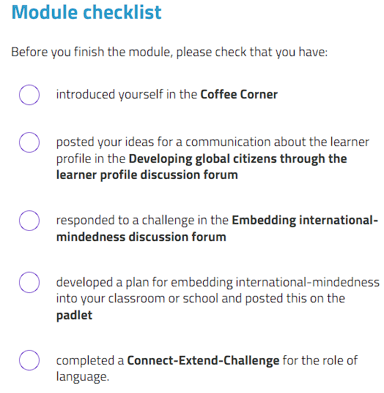

Learning engagement 1: Introduction
Good day everyone,
My name is Karina, I was born in Indonesia but I was brought up in Australia. So it is interesting to be in Indonesia again.
I've been teaching since 2015 in Australia with Australian and Victorian curriculum which I'm very proud of. Although ever since the pandemic I've been teaching in Indonesia with Cambridge curriculum and IB curriculum which also inspired me as an educator. Currently I am working as a PYP and MYP teacher in Bandung Independent School, I teach physical art for early childhood 1, 2 and 3, PYP Grades 1 to 5; MYP Year 1 (grade 6) and Design innovation grade 9 and 10.
I love the current school as in their building a whole community among the students, staff members, parents, teachers, specialist teachers and almost the whole community in the city. Indeed it is an amazing opportunity to work in an IB school who also implements it as a big community.
I'm looking forward to meet you all and experiencing the journey in PYP.
Have a blessed day,
Karina
Learning engagement 2: Developing global citizens through the learner profile
I created a tri-fold leaflet to respond to Toni's. It is an introduction about the IB learner profile and also an invitation for the parents to come for a morning or afternoon tea with teachers and alumni where they will present, share and open to Q&A session.
For the second one is the respond for Hussain which is a slideshow presentation and live experience with teachers and alumni to build, create and strengthens connection and understanding among the parents, students, teachers and alumni to discuss how the IB learner profile attributes are the foundation of personal growth and future success.
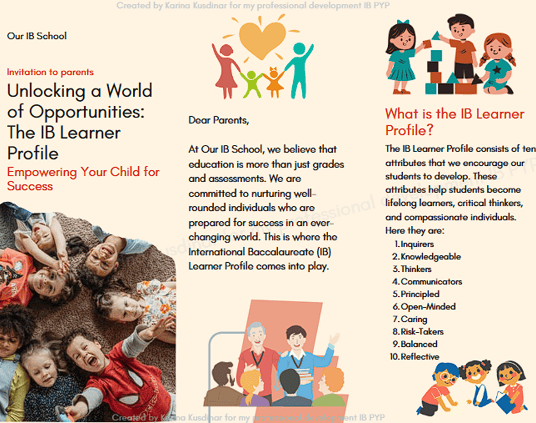

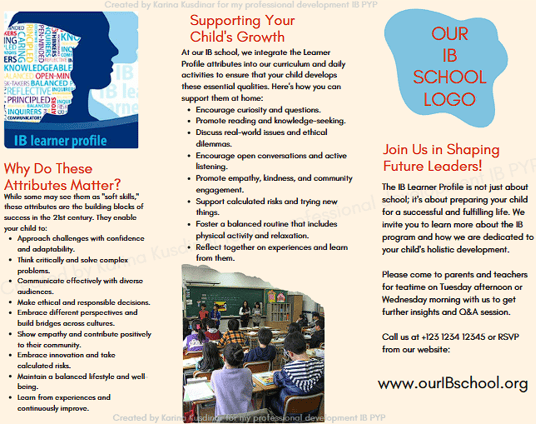

Learning engagement 3: Embedding international-mindedness forum
Hi everyone,
In responding to Andrea's scenario, I figured several ways that we could work it out.
From the intercultural understanding:
1. We can do a storytelling from around the world.
Share age-appropriate folktales and stories from different countries.
Discuss the cultural elements in the stories, such as traditional clothing, food, and customs.
2. We can celebrate cultural holidays.
Learn about and celebrate holidays from various cultures, such as Diwali, Idul Fitr, Easter, Lunar New Year, Thanksgiving and many more.
Engage in crafts and activities related to these holidays.
From multiligualism:
1. We can create some sort a poster of Hello, Thank you or have a nice day in different languages.
Teach students how to say "hello" in various languages.
Use fun activities like songs or games to reinforce their learning.
2. We can do storytime in different languages.
Introduce bilingual storybooks or rhymes in languages spoken by your students.
Encourage discussions about the languages they speak at home.
From Global Engagement:
1. We can do cultural dress-up day.
Host a day where students come dressed in traditional clothing from their cultural backgrounds.
Discuss the significance of each outfit and why it's important to the students.
2. We can do virtual pen pals from another IB school in different countries.
Connect with a kindergarten class from a different country and set up virtual "pen pals."
Share pictures, drawings, and simple messages with each other.
Use globes and maps to show where your students and their pen pals are located.
Discuss the differences in geography, climate, and culture.
Regards,
Karina
Responses from group:
Hi Karina,
What lovely ideas!
I particullary loved the idea of celebrating the different holidays as it would make some kids feel very proud to have their customs and holiday celebrated at school while allowing everyone to have an open mind to the different celebrations around the world . I think it would be important to organise this in a manner so no holiday no matter how big or small or well knownm would not be left out. For instance maybe the Mentor or Homeroom teacher could collect data or reach out to the parents to make sure that everyone has a sence of agency in this activity.
Thank you again for the lovely inpsiration!
Charles
Hi Karina!
I love the idea of doing story telling from around the world and also celebrating cultural holidays. This is something that we do in Kindergarten at my school! The students LOVE getting to know other cultures, and most of all trying treats from different celebrations,
Adding in the differences in geography and climate is such an extra bonus, because it can help explain why different people from different places may celebrate in different ways. This can include different colors, food, and traditions. I think that having virtual penpals would be amazing, and hopefully time differences would even work out to be able to zoom into one another's classrooms to see their learning environments! I wonder how we would be able to find a Kindergarten class from another country to work with for this activity?
Thank you for your ideas!
Marielle
Dear Karina
I really like the points that you mentioned. Celebrating different festivals and holidays can be such an interesting activity at school and in the community. I really like these activities. We often do a potluck day at school just to bring everyone together and share something about our country and culture.
I also like your idea of the Hello poster. I think it is something I can implement in my class and something that could lead to many questions and discovery.
Thank you for sharing.
Kind regards
Richelle
Hey Karina,
Such wonderful strategies! Creating a welcoming and inclusive atmosphere in the kindergarten classroom by incorporating elements like a 'Hello in Different Languages' poster, cultural dress-up days, and celebrating diverse holidays not only nurtures curiosity but also lays the foundation for lifelong international-mindedness. These strategies not only make learning fun but also help children understand and appreciate the richness of our diverse world from an early age.
Meylin
Hi Karina,
These are wonderful activities for younger students. My favorite activity is the virtual pen-pals. I like this because students can make deeper connections with each other. They can share their experiences and find commonalities. These are meaningful interactions.
Thank you for sharing these
Timea
Hi Karina,
Since I am someone who is obsessed with picture books, storytelling is a wonderful way to present people's values and way of life.
Sanja
In responding to Toni's scenario:
For Primary Students (Ages 6-11):
1. International Storytime:
- Read books and stories about different cultures and traditions.
- After each story, discuss the characters, settings, and customs, and encourage students to ask questions about the world.
2. Language Exploration Club:
- Start a club where students can explore the basics of different languages through fun activities like games, songs, and short phrases.
- Foster an appreciation for linguistic diversity.
For Middle Year Students (Ages 11-16):
1, Mock United Nations:
- Organize a model United Nations event within your school.
- Students can represent different countries and engage in debates on international issues.
2. Cultural Interviews:
- Have students interview family members or community members who speak different languages or have unique cultural backgrounds.
- Share their stories and experiences.
For High School Students (Ages 16-18):
1. Cultural Awareness Workshops:
- Organize workshops on cultural awareness, sensitivity, and intercultural communication.
- Encourage students to reflect on their own perspectives and biases.
2. Language Immersion Experiences:
- Encourage students to participate in language immersion programs or exchanges abroad.
- This allows for a deep linguistic and cultural experience.
3. Senior Projects with Global Impact:
- Encourage high school seniors to work on projects that address global challenges.
- This could be research, advocacy, or initiatives that make a positive impact on the world.
I thinks this would be helpful for Toni.
Regards,
Karina
Responses from the group:
Hi Karina,
Literature is an excellent way to increase students' understanding of different cultures. Learning words in another language supports culture and language development.
Great suggestions for developing international-mindedness! Remember, as you are using these examples, to discuss the 10 learner profile attributes that you find in the different stories and characters.
Corita
Hi Karina, your answer is so thoughtful. As an elementary school teacher, I couldn't agree more that reading stories and creating a language club are indeed two excellent ways to encourage students to explore multiple perspectives and develop international-mindedness. Stories have the power to transport us to different times and places, fostering an appreciation for the richness of our global society. Learning a new language opens doors to understanding different traditions, customs, and ways of thinking.
I think that short videos provide a dynamic and multimedia dimension to cultural learning. They offer a visual and auditory immersion into different cultures, making the experience even more vivid and memorable for students. Whether it's virtual tours of cultural landmarks, interviews with people from diverse backgrounds, or documentaries that showcase different traditions and practices, videos have the power to transport students to places they might never physically visit.
Mengying
Learning engagement 4:
The role of language forum
Hi guys,
I try my best to make it in chart. As attached.
Sincerely,
Karina
Responses from group:
Hiiii Karina
Thank you so much I apricate your work I read your chart, its really very impactive and productive for me,
Devender
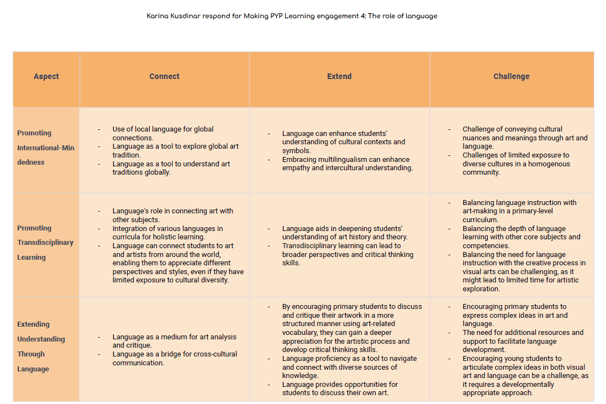

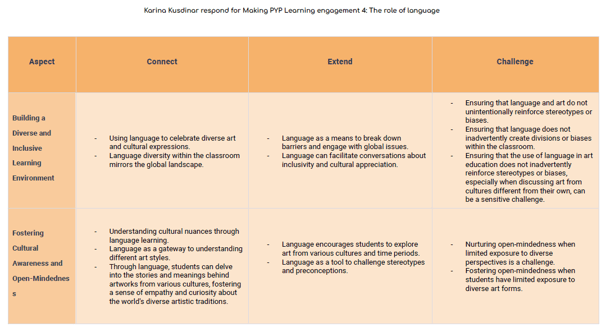

OUR STORY
Karina's International-mindedness in Visual Arts
Hi guys,
I teach Visual Arts for EY, PYP and MYP. There are always long term and short term plans, however, it depends to what is the interdisciplinary theme and key concept so I figure I shall share both.
I am happy to collaborate with other subjects when I can because collaborating with another teacher and experiencing different perspectives would make deeper connections.
I'm confident these will work because I do my best to make it flexible, interactive, student-centred, open-ended, and experiential and promote the IB learner profiles attributes.
Cheers,
Karina
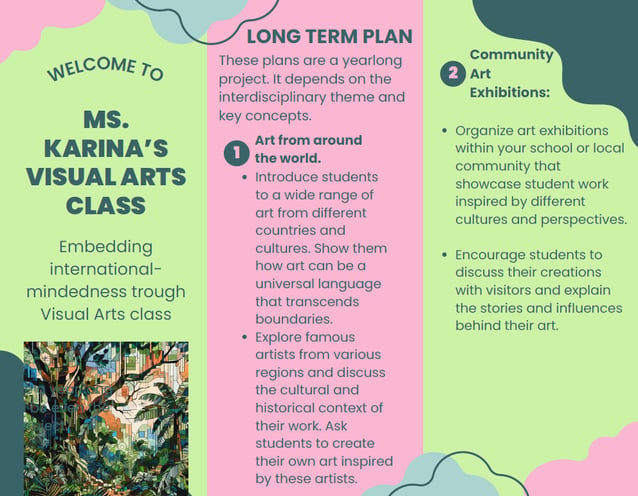

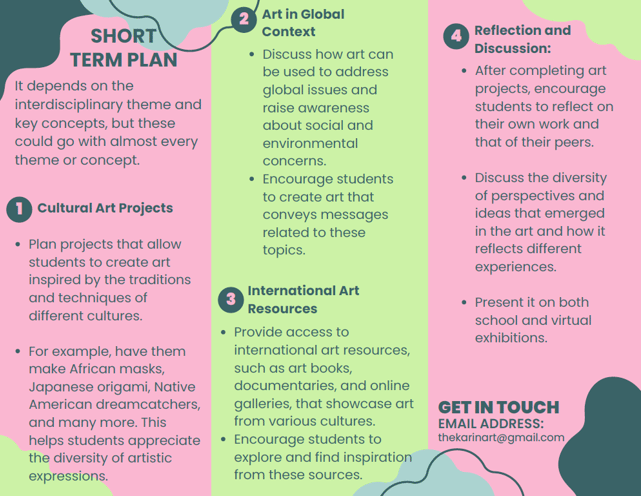

Reflective threads
My reflection after completing all four learning engagements in Module 1
Understanding of PYP Principles and Practices:
My understanding of PYP principles and practices has evolved through continuous engagement with the curriculum and professional development opportunities. Initially, I grasped the fundamental concepts of transdisciplinary learning, inquiry-based teaching, and the learner profile. Over time, my awareness has deepened, and I now find myself more adept at integrating these principles seamlessly into my teaching. Through ongoing reflection and collaboration with colleagues, I have developed a nuanced understanding of how the PYP framework can enhance student learning and promote a holistic approach to education.
Application of Workshop Learning in Teaching:
The workshops I've attended have provided valuable insights into practical strategies and methodologies aligned with the PYP framework. I am actively incorporating these learnings into my teaching practices. For instance, I have designed transdisciplinary units that encourage students to explore connections across subjects. Additionally, I am integrating inquiry-based learning activities that foster critical thinking and problem-solving skills. The workshop has empowered me to create a more dynamic and student-centered learning environment in line with PYP principles.
Supporting Agency through the Workshop:
The workshop emphasized the importance of student agency, encouraging me to rethink my approach to teaching and learning. I now provide more opportunities for student choice, allowing them to take ownership of their inquiries and learning pathways. By incorporating reflection and goal-setting into the curriculum, I am nurturing a sense of agency among my students. This shift has not only increased their engagement but has also fostered a deeper sense of responsibility for their own learning.
Developing International-Mindedness:
In the quest to develop international-mindedness in my students, I've incorporated diverse perspectives into the curriculum. Through literature, discussions, and collaborative projects, I aim to expose students to different cultures and worldviews. Furthermore, I encourage them to explore global issues and consider the interconnectedness of our world. By fostering an appreciation for diversity and interconnectedness, I believe my students are developing the mindset of responsible global citizens.
Learning of Language and International-Mindedness:
To ensure that language learning encompasses international-mindedness, I've expanded the scope of language lessons. In addition to linguistic skills, I incorporate literature from various cultures, exposing students to different linguistic nuances and cultural contexts. I also design language activities that require students to engage with global themes and express their thoughts on international issues, fostering a language learning experience that extends beyond grammar and vocabulary.
Embedding the Learner Profile:
The learner profile attributes are seamlessly embedded into my teaching practices. Whether through explicit discussions or modeling, I regularly highlight the importance of being inquirers, thinkers, communicators, and principled individuals. By incorporating these attributes into daily lessons, I aim to cultivate a learning environment that not only imparts knowledge but also nurtures the development of well-rounded individuals who embody the values of the learner profile.
Encouraging Engagement with Local and Global Issues:
I actively encourage students to engage with local and global issues by designing curriculum units that address real-world challenges. Bringing in guest speakers, organizing virtual exchanges, and utilizing technology to connect with students globally are strategies I employ. By providing platforms for students to explore, discuss, and contribute to issues beyond the classroom, I am fostering a sense of responsibility and awareness about their role in addressing both local and global challenges.
